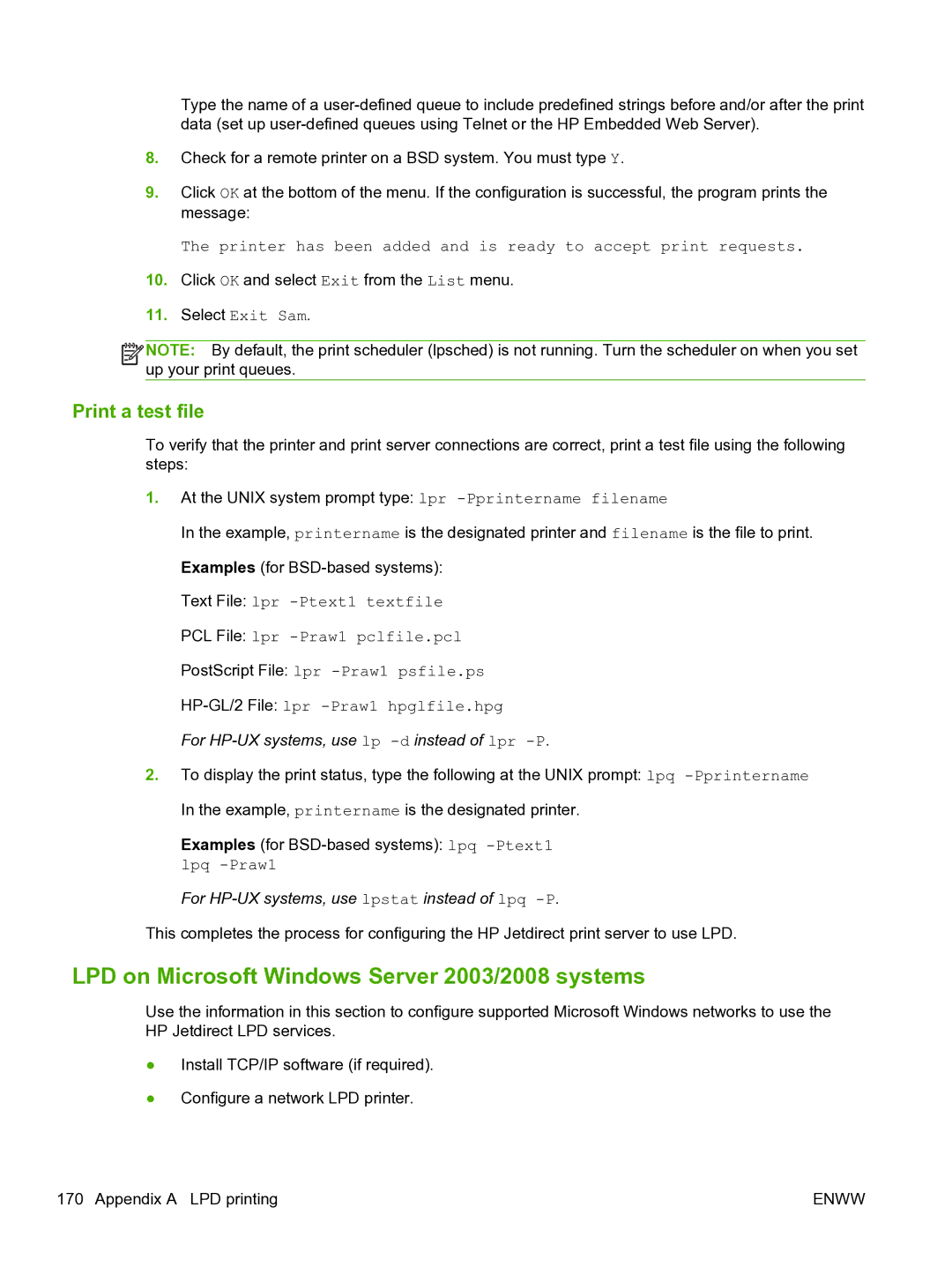Type the name of a
8.Check for a remote printer on a BSD system. You must type Y.
9.Click OK at the bottom of the menu. If the configuration is successful, the program prints the message:
The printer has been added and is ready to accept print requests.
10.Click OK and select Exit from the List menu.
11.Select Exit Sam.
![]()
![]()
![]()
![]() NOTE: By default, the print scheduler (lpsched) is not running. Turn the scheduler on when you set up your print queues.
NOTE: By default, the print scheduler (lpsched) is not running. Turn the scheduler on when you set up your print queues.
Print a test file
To verify that the printer and print server connections are correct, print a test file using the following steps:
1.At the UNIX system prompt type: lpr
In the example, printername is the designated printer and filename is the file to print. Examples (for
Text File: lpr
PCL File: lpr
PostScript File: lpr
For HP-UX systems, use lp -d instead of lpr -P.
2.To display the print status, type the following at the UNIX prompt: lpq
In the example, printername is the designated printer.
Examples (for
For
This completes the process for configuring the HP Jetdirect print server to use LPD.
LPD on Microsoft Windows Server 2003/2008 systems
Use the information in this section to configure supported Microsoft Windows networks to use the HP Jetdirect LPD services.
●Install TCP/IP software (if required).
●Configure a network LPD printer.
170 Appendix A LPD printing | ENWW |
